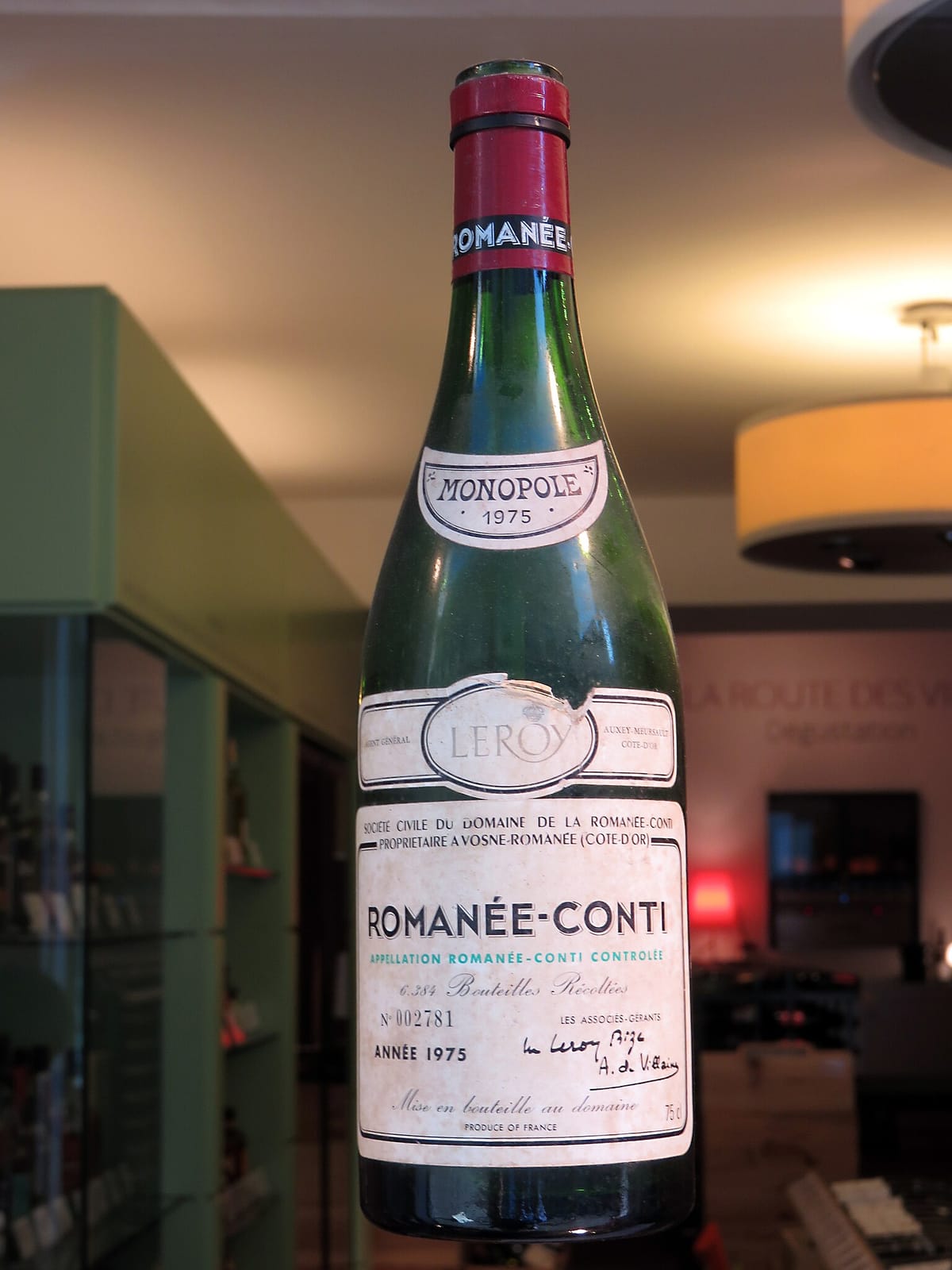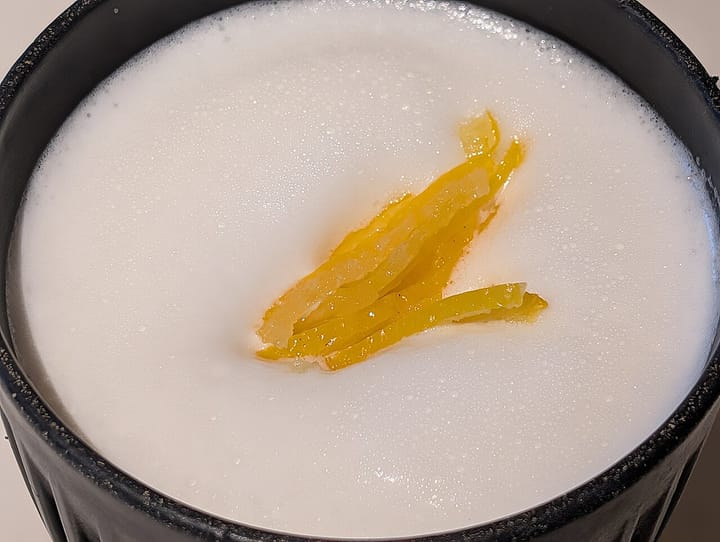Romanée-Conti: World's Most Expensive Aged Wine
Domaine de la Romanée-Conti, often referred to as DRC, stands among the world's most prestigious wine producers—a dream for many aficionados. What sets this iconic vineyard apart? Discover key insights into this esteemed winery.

Domaine de la Romanée-Conti, often abbreviated as DRC, is a revered name in the world of fine wines and is among the most prestigious and expensive vineyards globally.
This storied estate is located in Burgundy, France, in the heart of the Burgundy wine region, and its history, coupled with its dedication to quality, contributes to the mystique and high value of its wines.
In a 2018 Sotheby's auction in New York, a bottle of La Romanée-Conti from 1945 set a record by selling for $558,000.
Originally estimated at $32,000, this particular bottle was part of a limited 600-bottle release from that year, coming from a private collection.
Why Do Domaine de la Romanée-Conti Wines Command Such High Prices?
Three key factors contribute to the exceptionally high prices of Domaine de la Romanée-Conti (DRC) wines: outstanding quality, an esteemed reputation, and exclusive scarcity driven by supply and demand dynamics.
The flagship Romanée-Conti Grand Cru, with its cult status, commands prices in the tens of thousands of euros per bottle.
This steep cost is a result of both its exceptional quality and rarity. The vineyard spans just 1.8 hectares, limiting annual production to about 5,000 bottles.
When vintages are particularly outstanding, demand surges, pushing prices even higher.
DRC wines are universally coveted, with bottles typically sold individually. Beyond the famed Romanée-Conti, the 'entry-level' Corton still fetches upwards of 1,000 euros, while the exclusive Monopole La Tache can cost more than 4,000 euros.
The 1978 La Romanée-Conti is a standout example of investment growth, having increased by 38,744.92%, or £251,842 per case, since its initial release.
Notably, these wines are sometimes purchased as investments rather than for consumption, a practice that can frustrate the producers.
History
Domaine de la Romanée-Conti, often abbreviated as DRC, is an esteemed wine estate nestled in France's Burgundy region, famed for its exceptionally exclusive wines.
Tracing its origins to Roman times, the estate rose to prominence in the 13th century under the stewardship of the monks from the Abbey of Saint Vivant.
The estate was named after the Prince of Conti acquired the vineyard in 1760, adding his name to the celebrated Romanée vineyard.
Following the French Revolution, ownership passed through various hands until the early 20th century when the de Villaine and Leroy families took over.
Today, it is managed by Aubert de Villaine and Perrine Fenal, Lalou Bize-Leroy's daughter.
Aubert de Villaine, who significantly contributed to the winery's current prestige since joining in 1965, announced his resignation after nearly 60 years at the helm in March 2022.
Leadership will pass to his cousin, Bertrand de Villaine, next year, emphasizing the winery's deep family roots. Over the past 150 years, various family members have played pivotal roles in guiding this iconic winery.

What Wines Are Produced by Domaine de la Romanée-Conti?
Domaine de la Romanée-Conti (DRC) produces eight distinguished wines, each from a plot with grand cru status within the Burgundy region.
These celebrated wines include Romanée-Saint Vivant, Grands Échézeaux, Échézeaux, Le Montrachet, La Tâche, Le Richebourg, La Romanée-Conti, and Corton.
Unique among many Burgundy vineyards, the plots for La Romanée-Conti and La Tâche are solely owned by DRC, designating them as monopoles. This singularity is a mark of their exclusive production.
The inaugural vintage of Domaine de la Romanée-Conti was released in 1232, sourced from what is now known as La Romanée-Conti and Romanée-Saint Vivant plots.
At this time, the grand cru classification system had not yet been established, as it would only appear centuries later.
One of the newer additions to their lineup, Corton, emerged under DRC management following a 30-year lease agreement signed with Prince Florent de Mérode on November 11, 2008.
The first vintage of Corton was released in 2009. Notably, Corton stands out as the sole red grand cru from the Côte de Beaune and marks a significant expansion for DRC, which has also recently begun cultivating a plot of Corton-Charlemagne from another top-tier regional winery.
What Are the DRC Outstanding Vintages Across its range of wines, each renowned for their quality and collectibility.
Does Domaine de la Romanée-Conti Utilize Organic or Biodynamic Farming Techniques?
Domaine de la Romanée-Conti has embraced biodynamic farming practices since 2008 to enhance the balance, tension, and complexity of its wines.
Prior to this shift, the vineyard management was strictly organic. The biodynamic method, inspired by Rudolf Steiner's theories, aims to maintain natural balance in the vineyards, with considerations for cosmic forces such as the sun and moon positions playing a crucial role in the viticultural process.
This approach is part of the winery's commitment to achieving perfection in wine production.

What Makes Domaine de la Romanée-Conti Vineyards Unique?
The vineyards of Domaine de la Romanée-Conti are prominently situated on the elevated slopes of the Côte d'Or in the Burgundy wine region of eastern France.
This sub-region is divided into two key areas: the Côte de Nuits and the Côte de Beaune.
The higher terrain offers superior drainage and a soil composition rich in limestone and less clay, creating optimal conditions for vine growth and grape ripening.
The strategic hillside location also ensures ideal sun exposure. Enhancing their prestige, these vineyards are recognized on the UNESCO World Heritage List, a status achieved in July 2015 after significant efforts by Aubert de Villaine, co-director of the winery.
This recognition was given to the Climats of the Côte de Beaune and Côte de Nuits for their unique cultural landscape and winemaking history, further highlighting the special nature of Domaine de la Romanée-Conti's vineyards.
This UNESCO status underscores the global significance and unique heritage of the Côte d'Or's winemaking tradition.
What are the Celebrated Tasting Notes of Romanée-Conti Grand Cru?
Romanée-Conti Grand Cru, one of the most celebrated wines from Domaine de la Romanée-Conti, is renowned for its exceptional tasting notes that embody the epitome of Burgundy's winemaking artistry. Here's an outline of what makes this Grand Cru particularly celebrated:
- Aroma: The bouquet is notably complex and evolves as the wine ages. Initially, it may present fresh and vibrant aromas of cherries, raspberries, and violets. As it matures, the aroma develops richer layers including notes of black cherry, plum, and a distinct earthiness, often described as forest floor or truffle. Spice notes such as clove, licorice, and sometimes a hint of tobacco also come into play.
- Palate: On the palate, Romanée-Conti Grand Cru is a showcase of balance and depth. The wine typically features a powerful yet refined body with an array of flavors that mirror its aromatic complexity. Red and black fruits are prominent, enhanced by floral nuances and a subtle minerality that reflects its terroir. The integration of flavors with the acidity and tannins is seamless, creating a harmonious and structured tasting experience.
- Texture: The texture is famously silky and smooth, with well-integrated, plush tannins that contribute to a velvety mouthfeel. This texture is a hallmark of Romanée-Conti Grand Cru, distinguishing it in the realm of fine wines.
- Finish: The finish of this Grand Cru is exceptionally long and lingering, characterized by a persistent and evolving aftertaste that leaves a lasting impression of its complexity and elegance. As the wine finishes, there may be a resurgence of spice and mineral notes, ensuring a dynamic tasting experience.
- Evolution: Romanée-Conti Grand Cru is celebrated for its remarkable aging potential. With age, the wine’s profile becomes increasingly complex, evolving from vibrant fruit to more nuanced and subtle expressions of dried fruit, forest, and spice elements. The ability to age and transform over time is a significant part of its allure and prestige.


